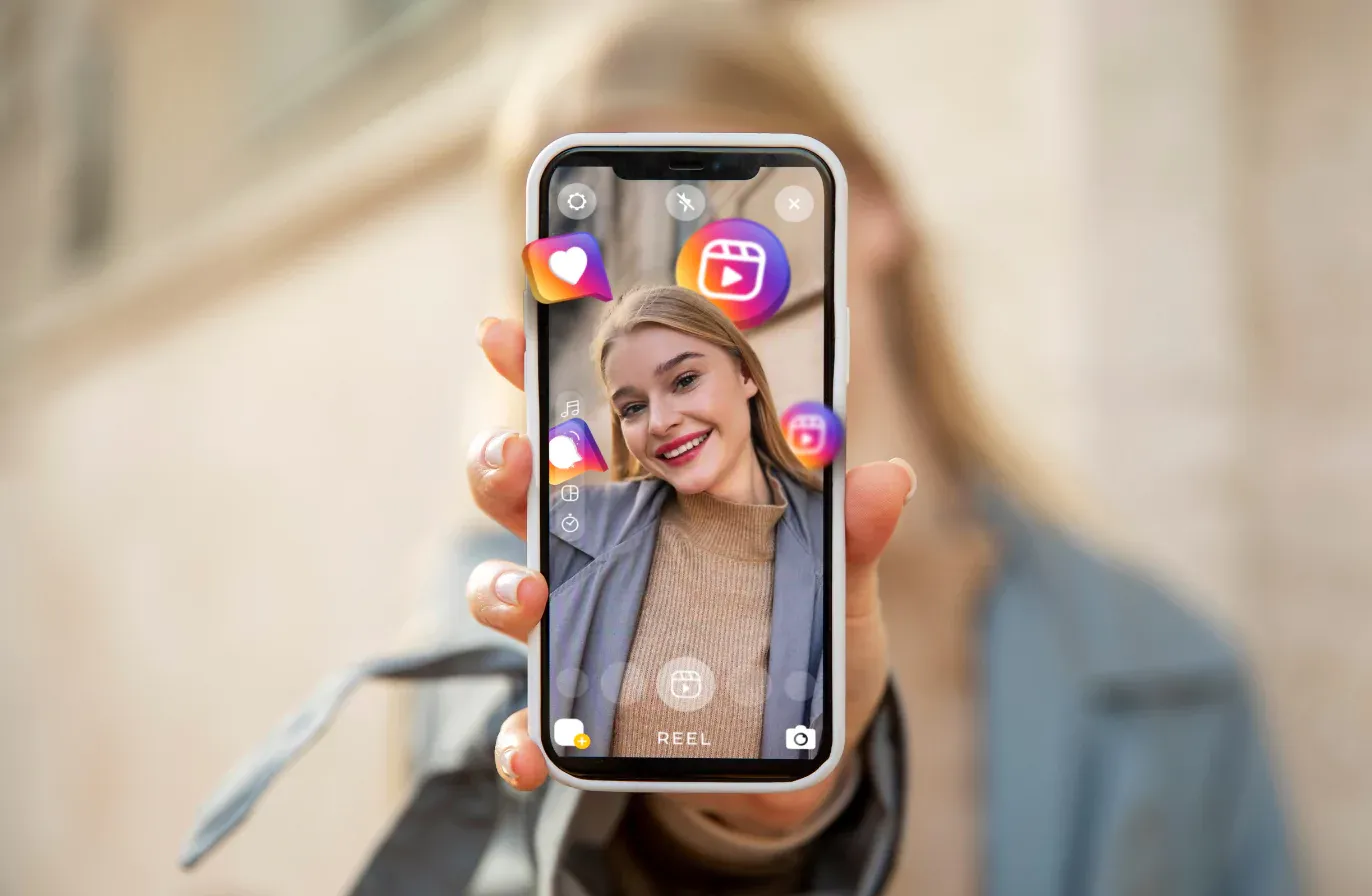How to Find and Grow Your Instagram Target Audience
Learn effective strategies for defining and reaching your Instagram target audience, enhancing your marketing efforts, and maximizing engagement.


Scrolling endlessly, posting daily, and still feeling like no one sees your content?
You’re not alone.
Without knowing your Instagram target audience, every post is just another drop in the ocean.
The real growth hack isn’t more content. It’s smarter content.
Through social media audience analysis and the power of Instagram analytics, you can finally uncover who your followers are, what they care about, and how to reach them.
Throughout this article I'll guide and show you how to define your social media target audience and craft strategies that make your posts impossible to ignore.
Let’s dive in.
Key takeaways
-
What is Instagram’s audience today? Instagram’s audience is predominantly young, trend-driven, and visually oriented, with over 60% of users under 35.
-
What makes Instagram audiences different from other platforms? Unlike text-heavy networks, Instagram thrives on fast, aspirational visual storytelling that resonates with lifestyle-driven communities.
-
How to identify your target audience on Instagram? Defining your audience means going beyond demographics to understand their motivations, content preferences, and engagement behaviors.
-
What audience KPIs to track by depending on your goal? Choose KPIs based on whether your goal is awareness, engagement, or conversion, and track the metrics that reflect progress toward that objective.
-
How to reach your target audience segments on Instagram? Use a mix of analytics, trends, collaborations, and tailored content strategies to authentically connect with your audience where they are most active.
What is Instagram’s audience today?
Instagram? It’s the stylish café where culture, trends, and lifestyles collide.
To understand how to connect, you first need to know who’s actually sitting at the table.
As the chart above shows, the audience on Instagram is overwhelmingly young and trend-driven.
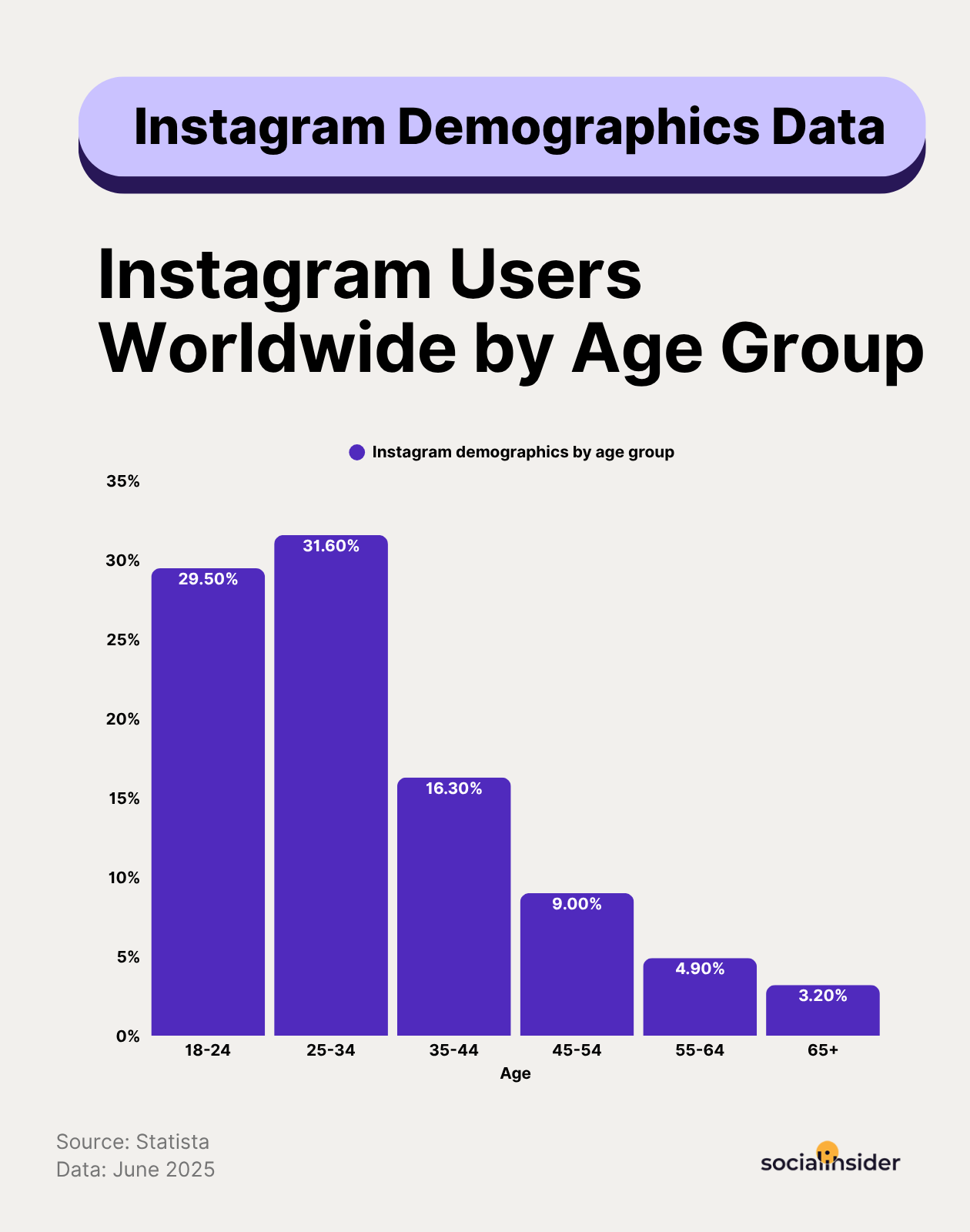
More than 60% of users are under 35, making Instagram the go-to space for brands that want to reach a vibrant, visually oriented social media community.
Thus, these audience demographics for Instagram paint a clear picture: if you want relevance, you have to meet your audience where they scroll.
What makes Instagram audiences different from other platforms?
Unlike platforms that prioritize text or long-form updates, Instagram is built on fast, visual storytelling.
As I previously mentioned above, the target audience for Instagram is younger, trend-driven, and highly responsive to aesthetics.
While Facebook may serve as a family-and-friends hub and LinkedIn as a professional network, Instagram thrives on aspirational social media content, viral trends, and cultural relevance.
That makes it the platform of choice for brands looking to connect with lifestyle-driven communities rather than transactional audiences.
What is the psychology behind Instagram user behavior?
At its core, Instagram is a stage for identity.
Instagram audiences don't scroll only for entertainment; they’re looking for inspiration, validation, and a sense of belonging.
Unlike text-heavy platforms, Instagram taps into visual storytelling, which speaks faster to emotions than words ever could.
For brands, here's my takeaway: building a community here means creating content that aligns with users’ identities and aspirations.
It’s not just about showing products; it’s about showing people how those products fit into the life they imagine for themselves.
How to identify your target audience on Instagram?
So if you’re wondering who is your target audience and how to reach it effectively, you’ve landed in the right place.
On Instagram, audiences are built around behavior, content patterns, and community alignment, not just demographics.
Here's how I recommend starting your research process, by asking yourself the following questions:
- Who are they, really?
Go beyond age and location.
What motivates them to open Instagram every day? Are they looking for style inspiration, productivity hacks, or entertainment?
- How do they consume content on Instagram?
Not every audience engages the same way.
While general benchmarks show carousels often get the highest engagement, your audience might prefer quick Reels or swipe through Stories instead.
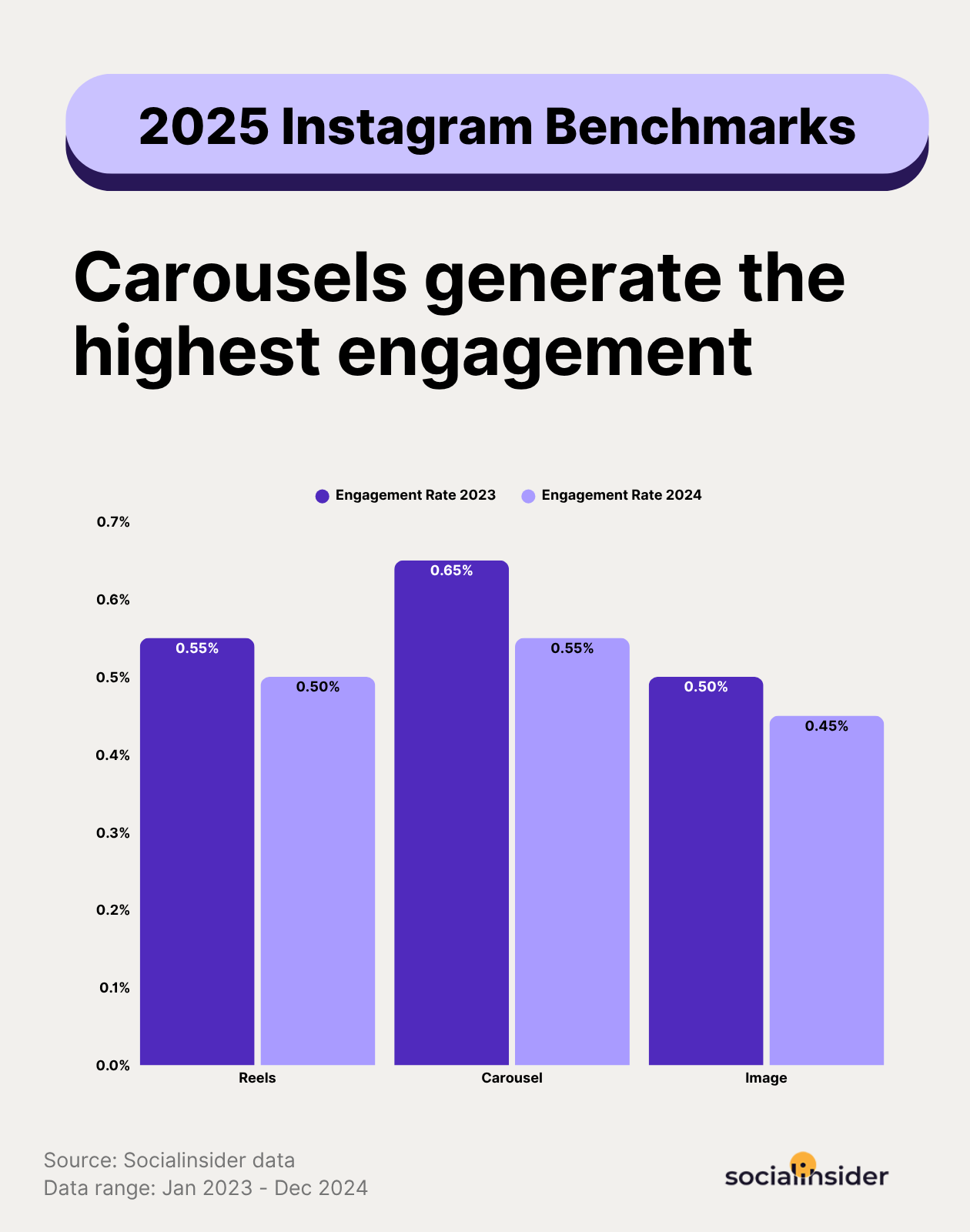
Spotting these tendencies early helps you understand what type of content actually clicks with them.
- Why do they follow brands like yours?
Is it to discover new products? To join a lifestyle or aesthetic? To feel part of a community?
Understanding this why shapes the kind of captions, visuals, and CTAs you use.
Essentially, identifying your target audience on Instagram is about blending social media data and intuition.
The result? You move from talking to anyone who might buy to creating for specific personas who feel like you get them.
This brings me to the next point.
Create audience personas
Once you’ve done the groundwork, translate insights into clear personas. This step keeps your social media content strategy sharp and focused.
My advice would be to focus on the following three points:
Primary vs. secondary audiences
Your primary persona is the one most likely to engage and purchase.
Secondary personas still matter, though. They can amplify reach, add credibility, or represent emerging opportunities.
Let me give you an example: a beauty brand’s primary persona might be Gen Z trendsetters, while a secondary persona could be millennial professionals looking for quick hacks.
Instagram-specific persona elements
Unlike standard marketing personas, here you need IG-specific traits:
- Preferred formats: Reels, carousels, or static posts
- Engagement style: Do they comment with opinions, or just save posts quietly?
- Platform habits: Are they late-night scrollers, lunch-break browsers, or all-day lurkers?
Content triggers
Personas should capture what actually makes them engage:
- Do they binge educational posts in carousels?
- Do they prefer aspirational visuals over detailed captions?
- Are they quick to click links in bio, or do they engage mostly within the app?
By grounding your Instagram personas in this level of detail, you create content that feels intentional.
How to research your audience to get insightful content ideas?
In this section, I'll show you how to use data-driven marketing strategies to research your Instagram target market.
From deep-diving into your Instagram audience analytics to spying on your competitors and even directly asking your customers, I’ll cover the social media tactics that will help you create insightful content.
Deep dive into your Instagram audience analytics
Here’s how to check your Instagram metrics and use them to fuel organic social media growth:
Check your demographics
Start by getting a clear snapshot of who’s engaging with your content.
To do this, you may use third-party Instagram analytics tools such as Socialinsider to gain access to critical data about age, gender, location, and more.
By analyzing this data, you can identify key segments of your audience and understand how they interact with your posts.
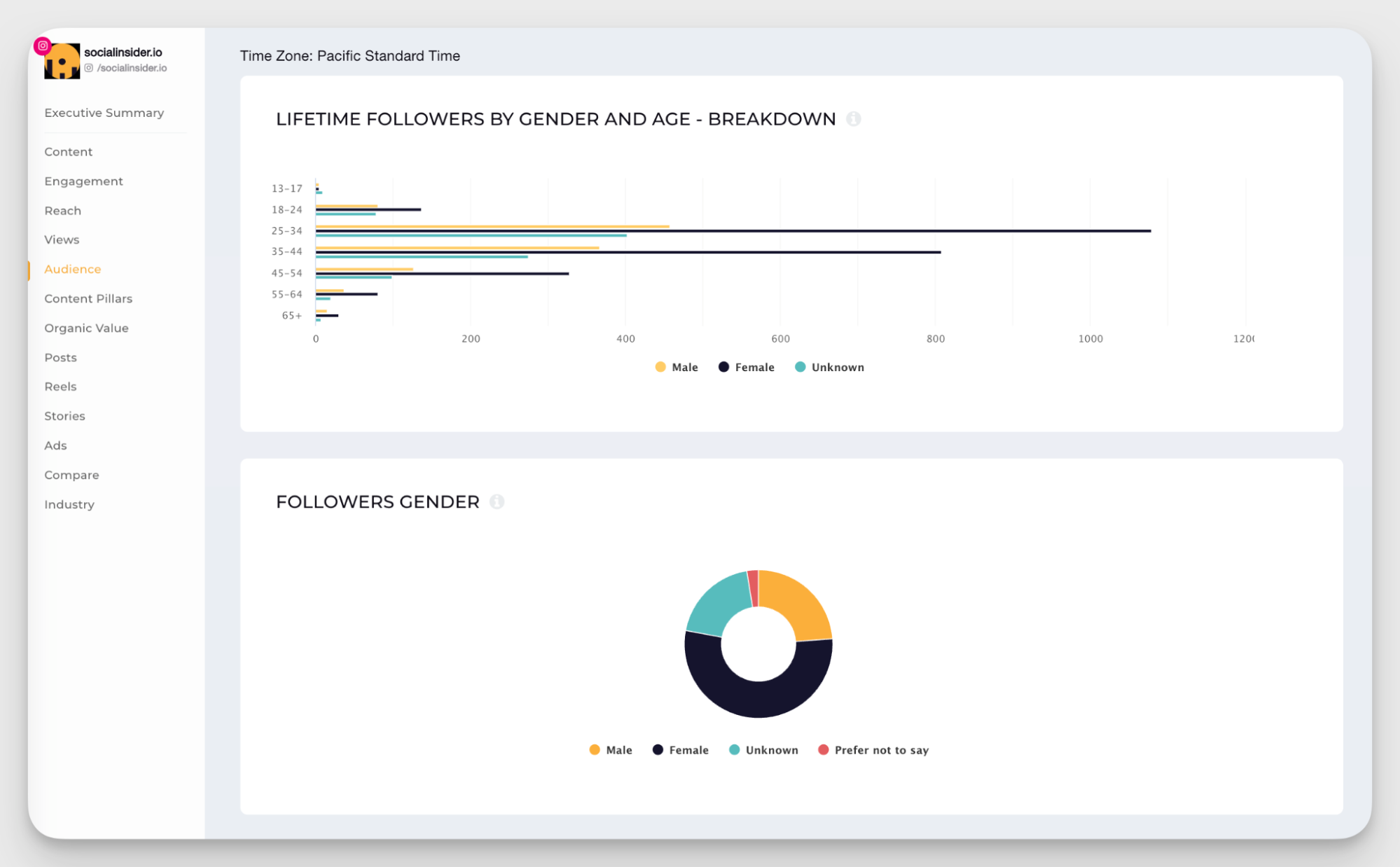
Want to increase engagement or expand into new markets?
Look at the geographical distribution and demographic breakdown.
Use this information to tailor your messaging, posting times, and even content types.
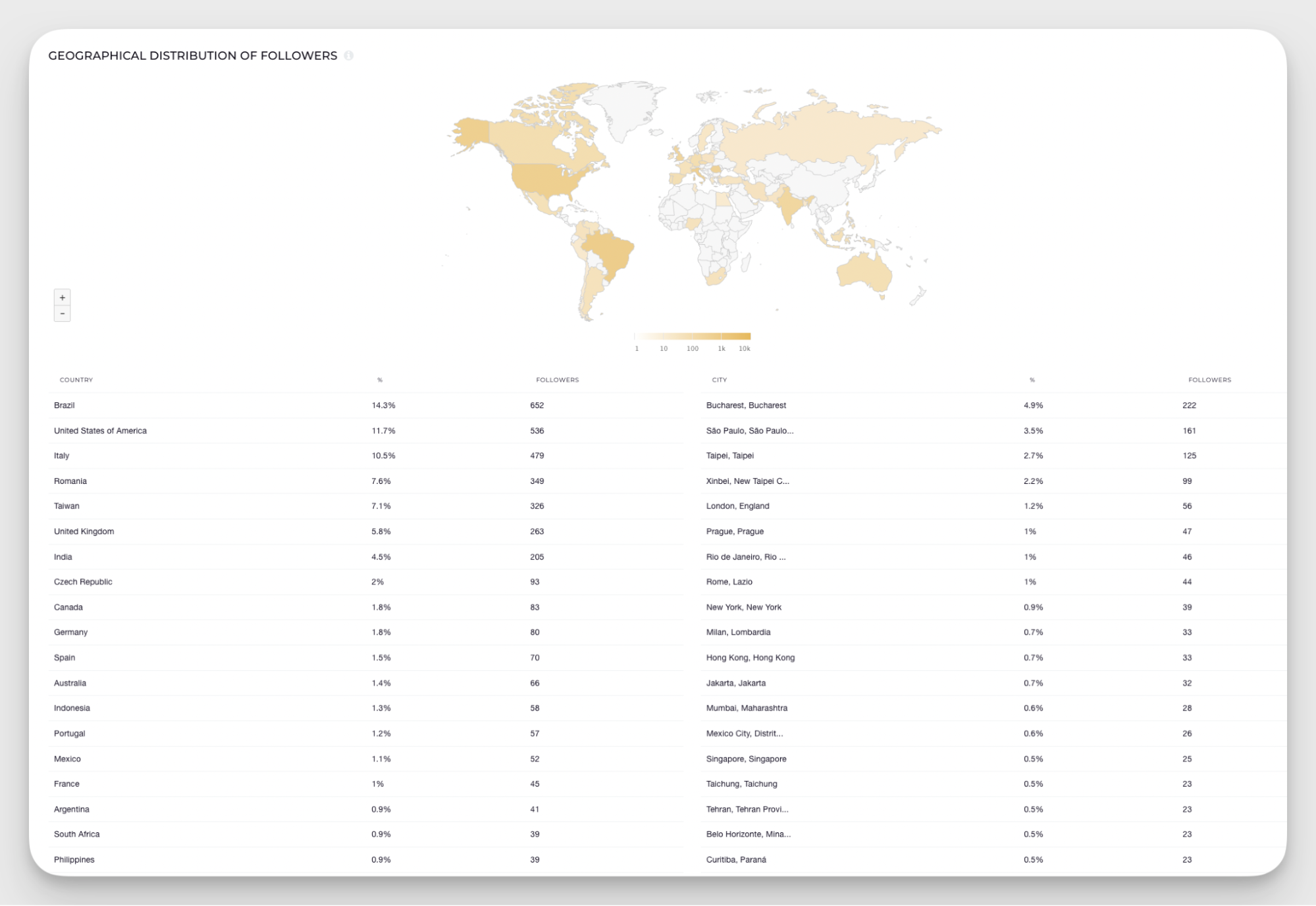
Perform an in-depth content analysis
Now that you’ve checked your demographics, it’s time to dig deeper into the content you’re posting.
Understanding what resonates with your audience implies identifying patterns in the types of content that get the most engagement.
This social media analysis allows you to fine-tune your strategy and optimize the content you’re creating.
- Identify your best-performing content formats
The first step in refining your content strategy is identifying which formats perform best.
Are your followers responding to Reels more than carousels? Do they prefer educational posts over entertainment?
Socialinsider provides detailed metrics that show which content types drive the highest engagement.
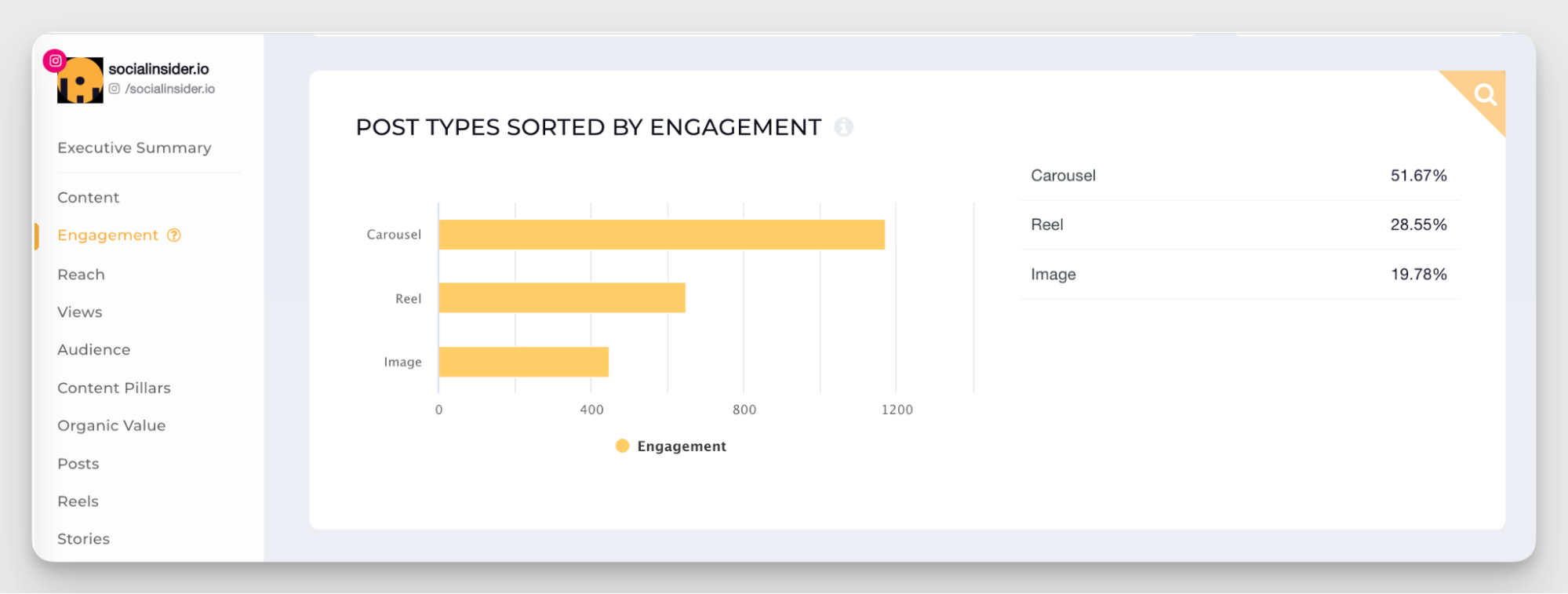
Here's a top tip I have for you: it’s critical to move beyond just the demographics data and look closely at your audience's preferences. Knowing how they engage with different types of content will allow you to optimize your posts for maximum impact.
- Discover what your most engaging content pillars are
Content pillars define the core themes of your posts.
Whether it’s educational tips, industry insights, or product launches, discovering which themes get the most interaction helps you sharpen your focus.
With Socialinsider, you can use the data to see what topics are resonating and refine your content strategy to prioritize those areas, like in the example below.
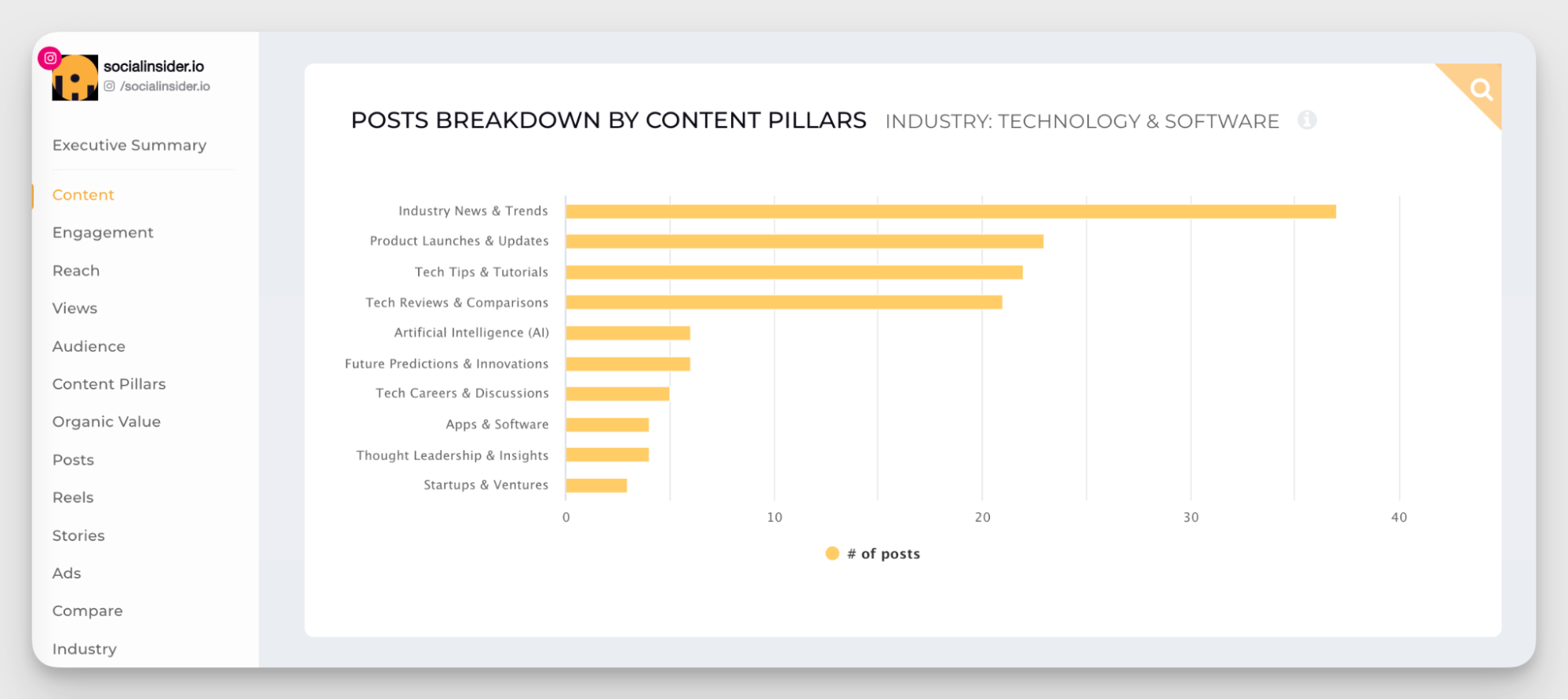
- Look at your top posts by content format
Now that you know which formats perform best, look at how those formats are used in your top-performing posts.
For example, Reels might be ideal for company culture content, while carousels could excel at delivering step-by-step guides. By understanding your audience’s content consumption preferences, you can create a content calendar that’s both diverse and impactful.
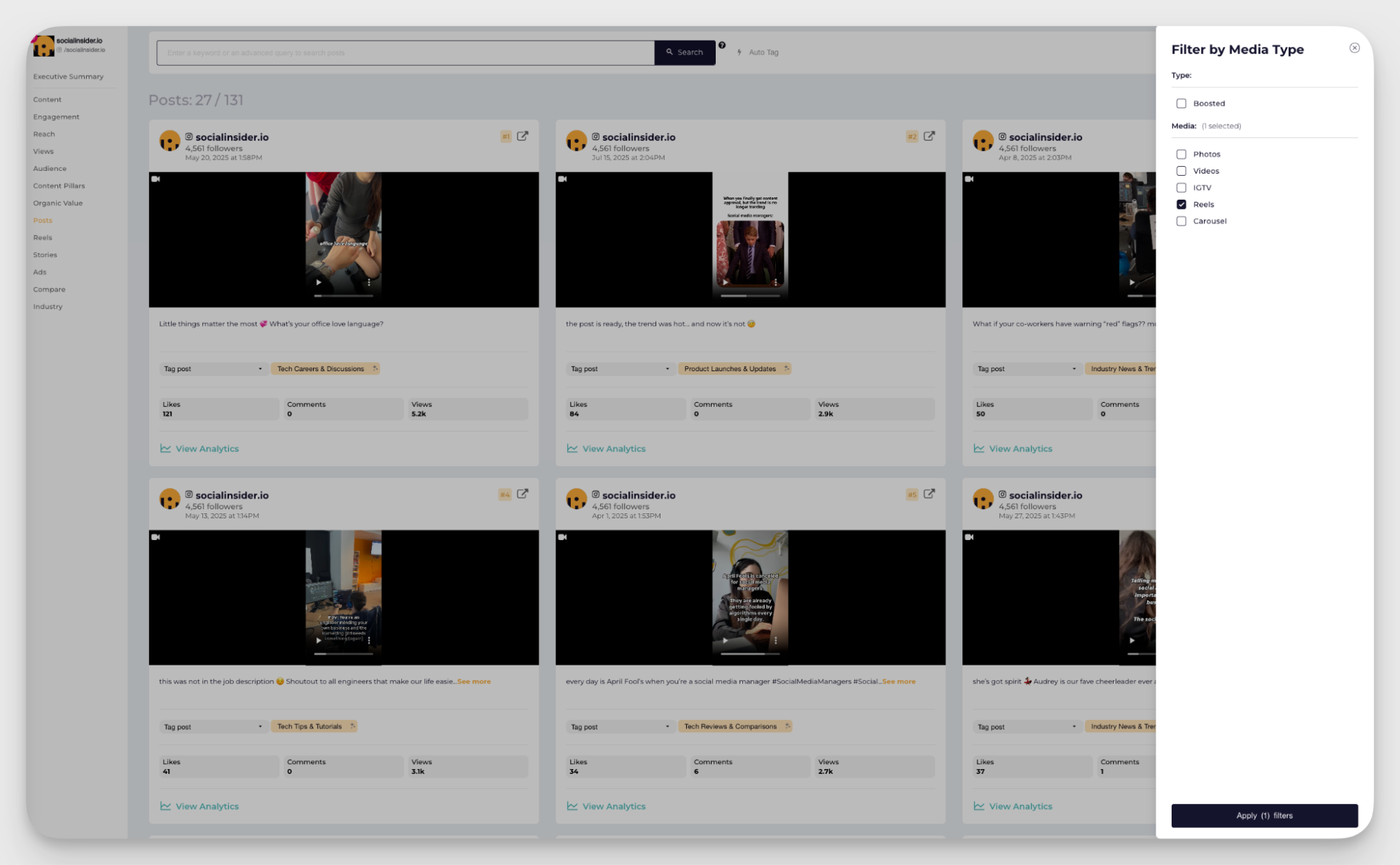
And one of the things that I find most helpful in Socialinsider is that it allows you to segment your posts by format, so you can see exactly which type of content performs best in each format.
Spy on your competitor’s audiences
Another great social media practice for uncovering content opportunities is to analyze your competitors’ audience.
By monitoring their performance, you can spot trends, discover gaps, and adjust your strategy to capture attention where they might be falling short.
Let me show you what my approach is:
Look at the keywords & who’s commenting
A great social media analyst will pay attention to the keywords competitors are using and who is engaging with their posts.
Are there influencers, industry leaders, or specific types of followers consistently interacting with their content?
Take for example Later Media, who, by focusing on behind-the-scenes content creation and using #InfluencerMarketing and #ContentCreator, targets social media managers, influencers, and content creators.
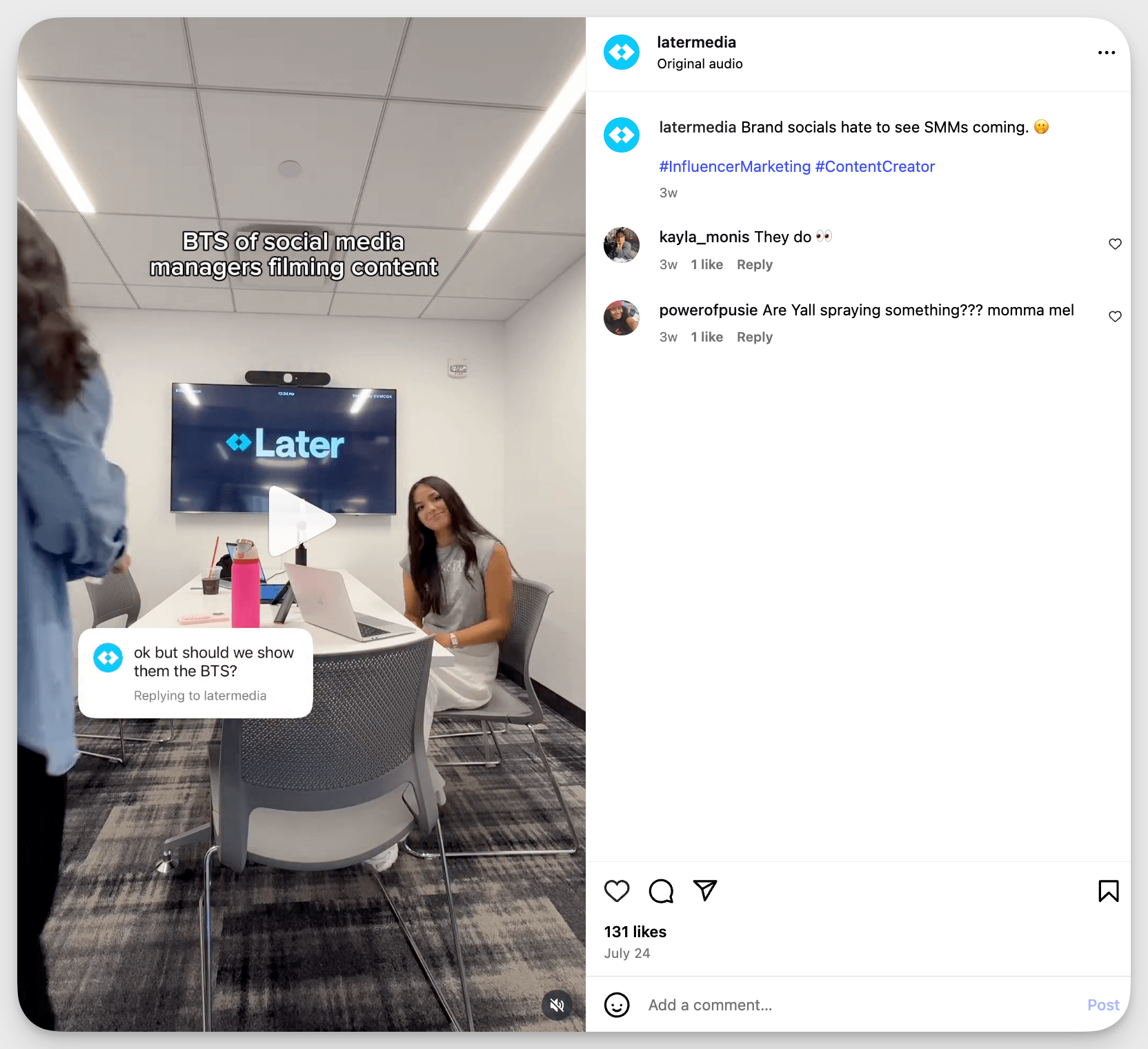
Identify potential content gaps from your competitor’s content pillars analysis
Now, let's take a look at the content pillars of Intercom and ServiceNow I extracted below.
Both companies focus heavily on Tech Reviews & Comparisons, but ServiceNow is seeing higher engagement in this area.

To boost its performance, recommendations for Intercom would be to study ServiceNow’s approach to this pillar and adapt some of its successful strategies.
Additionally, for Intercom, I would emphasize the need to explore content categories they haven't fully tapped into yet, such as Product Launches & Updates (like ServiceNow) or Tech Tips & Tutorials (like Zendesk).
Directly ask your customers about your curiosities
Sometimes the easiest way to get valuable insights is simply to ask.
Instead of relying only on data from analytics tools or competitor monitoring, go straight to the source: your own followers and customers.
Direct engagement not only gives you content ideas but also strengthens community trust, as your audience feels heard and involved in shaping what they see.
Integrate questions and polls into your Stories
Personally, I see Instagram Stories as one of the most effective tools for collecting quick, actionable feedback.
- Use the question sticker to let followers tell you directly what kind of content, products, or tips they’d love to see.
- Run polls to test ideas before investing resources in production. For example, if you’re unsure whether a “day-in-the-life Reel” or a “tutorial carousel” would perform better, ask your audience. And use the results to guide your next post.
The best part? This approach creates interactive touchpoints that boost engagement while feeding you real-time content ideas.
Leverage social listening
Not all valuable insights come from structured feedback.
Many times, your customers are already sharing their opinions across social channels. You just need to listen.
- Track brand mentions, hashtags, and tagged posts to see what your audience is saying organically.
- Monitor common questions or recurring topics in your DMs and comments. These can easily be turned into educational posts, FAQs, or even series formats.
- Pay attention to the language your customers use. It can reveal pain points, preferences, and even wording you can adopt in your captions for stronger resonance.
Together, these tactics ensure your content strategy stays customer-first, responsive, and deeply relevant.
What audience KPIs to track by depending on your goal?
Whether you’re aiming to blow up your brand’s visibility, spark serious engagement, or convert non-followers into loyal customers, knowing the right social media KPIs is your secret weapon.
Below, we’ll break down the social media metrics that matter for each goal and show you how to get discovered on Instagram.
Awareness goals
When it comes to how to target your audience on Instagram, your primary focus is on reaching new eyes.
In this instance, these key performance indicators (KPIs) will give you a clear picture of how well your content is spreading across Instagram and beyond.
- Profile visits: The number of times your profile is visited tells you if people are curious about your brand. A jump in visits indicates that your content is sparking interest and driving traffic to your profile.
- Views: Views, especially on videos, Reels, and Stories, are your signal that your content is reaching a broad audience. Keep an eye on these to track the virality of your posts.
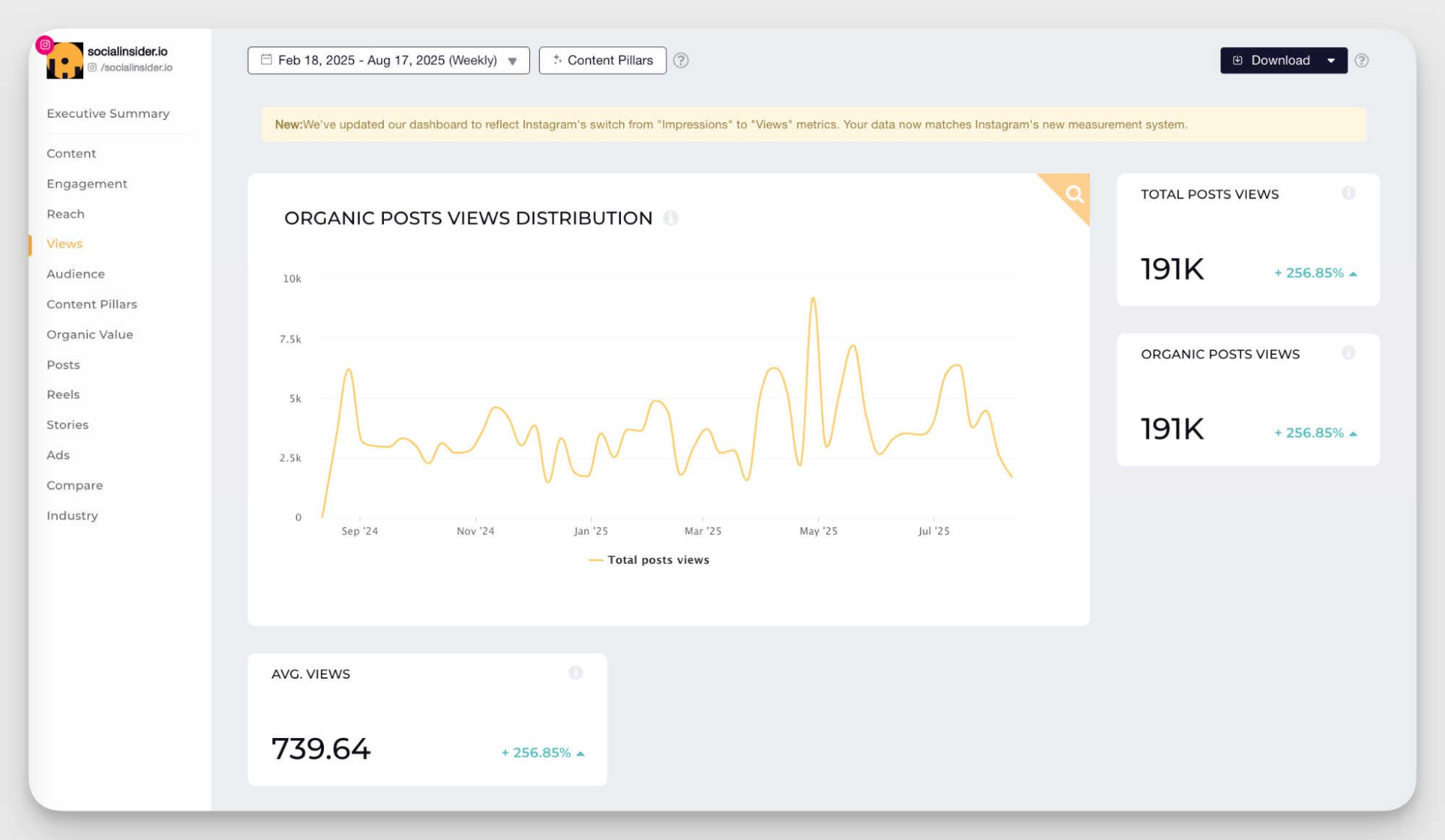
- Followers and followers growth: Growth in followers is a reflection of your content's ability to resonate and attract new audiences. Watching the trendline of followers helps you understand the impact of your awareness campaigns and lets you see if you’re successfully expanding your reach on Instagram.
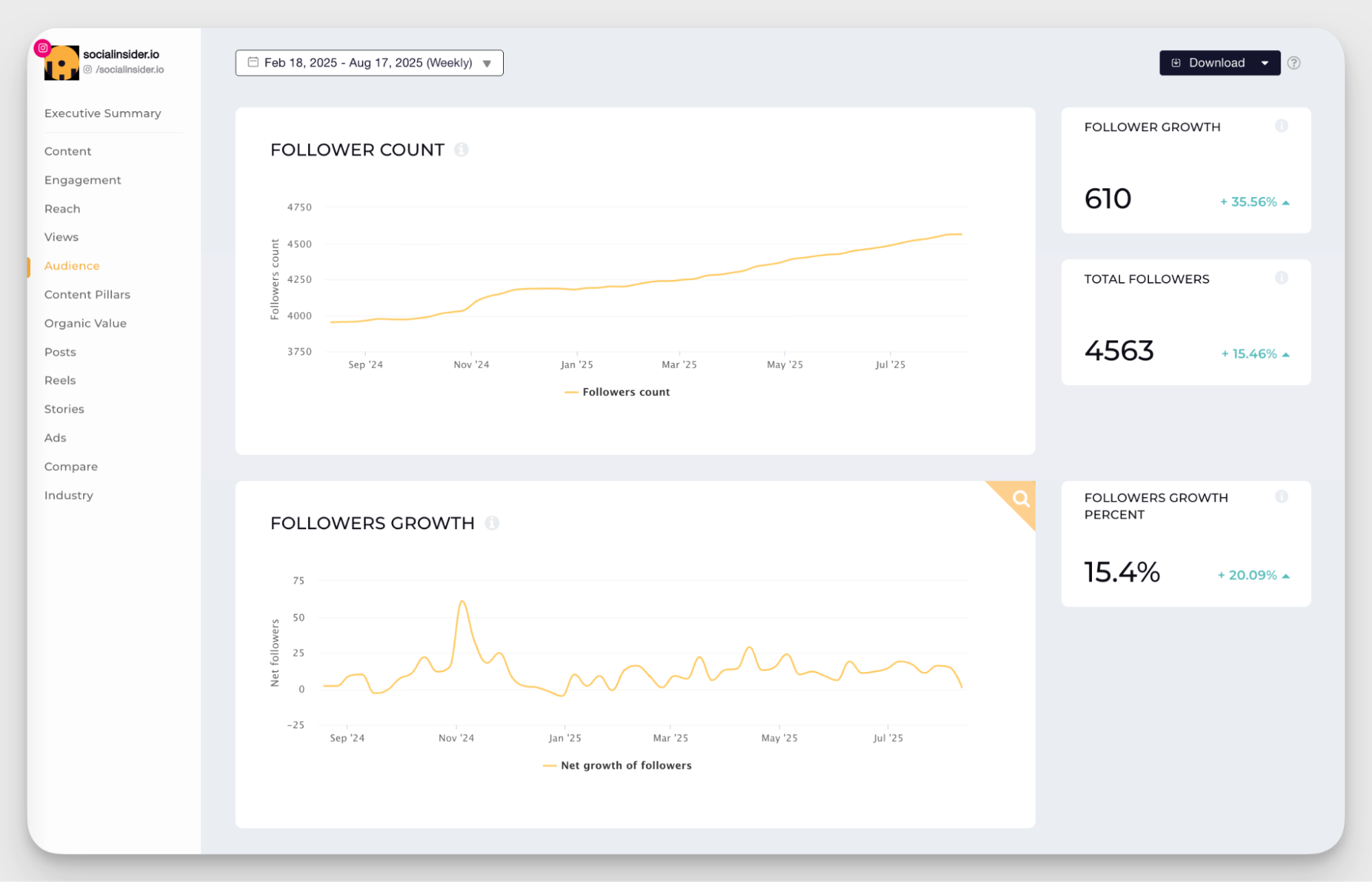
Engagement goals
Once you’ve grabbed attention, the next challenge is to spark genuine interaction.
Engagement is where your audience becomes emotionally invested in your brand, and these KPIs will help you gauge that connection.
- Engagement rate by followers and by reach: Engagement rate isn’t just about likes. It’s also about how much your audience is actually interacting with your content. It’s best if you break it down by followers and reach to see if your engagement is happening with your core audience or with new potential followers.
- Comments, shares and saves: Comments show the depth of your audience’s interest, while shares indicate that your content is worth spreading. Saves are a direct reflection of how valuable your audience finds your content. Together, they tell you which posts are truly making an impact.
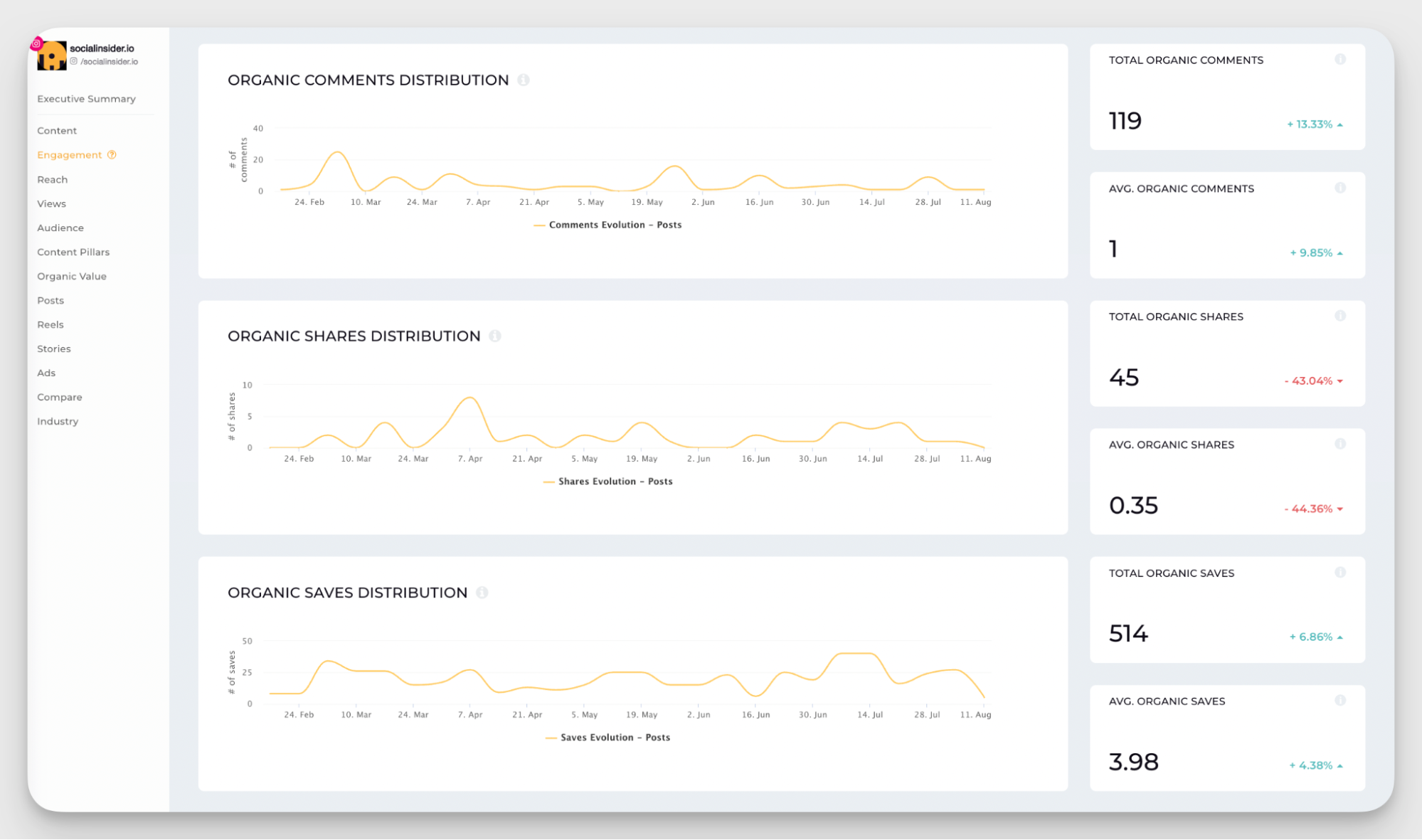
- Story link clicks: Stories are a powerful way to engage your audience in real time. Tracking link clicks helps measure how many people are taking action.
- Story questions responses and poll participants: Meanwhile, responses to questions and poll participation show how actively involved your followers are in your brand’s journey.
Conversion goals
If you’re aiming for return on investment (ROI), conversions are your ultimate metric.
Let me quickly walk you through the KPIs that measure how well your Instagram traffic turns into real business outcomes:
- CTR (for Story link clicks): Click-through rate on your Story links shows how effectively your call-to-actions are working. If people are clicking, it means your content is compelling enough to drive action.
- Shopping Tag clicks (for product tag interactions): Instagram Shopping has made it easier than ever to link directly to products. Tracking Shopping Tag clicks helps you see how many people are exploring your catalog straight from your posts, indicating strong purchase intent.
- Product page views: When your audience clicks through to your product pages, it’s a sign they’re interested. Product page views give you valuable insights into which items are catching attention and driving traffic to your online store.
- Add to Cart rate: A key step in the buying journey, tracking how often users add products to their cart shows the intent to purchase.
- Purchase conversion rate (PCR): This shows you how many people are actually completing the purchase after clicking through from Instagram. It’s the ultimate indicator of how well your Instagram traffic is translating into sales.
- Average order value (AOV): Tracking AOV helps you understand how much each customer is spending when they come through Instagram. A higher AOV means your Instagram efforts are driving bigger sales.
How to reach your target audience segments on Instagram?
To successfully connect with your target audience on Instagram, follow these Instagram best practices:
- Balance educational, entertaining, and promotional content
Your content needs to offer value, entertain, and also promote your brand.
From experience, I can tell you that the mix of these content types is most effective when it comes to keeping your audience engaged while not overwhelming them with constant sales messages.
- Identity the best time to post
Understanding when your audience is most active can significantly increase engagement.
Use social media analytics tools such as Socialinsider to pinpoint the best time slots to post and ensure you capture the largest, most relevant audience.
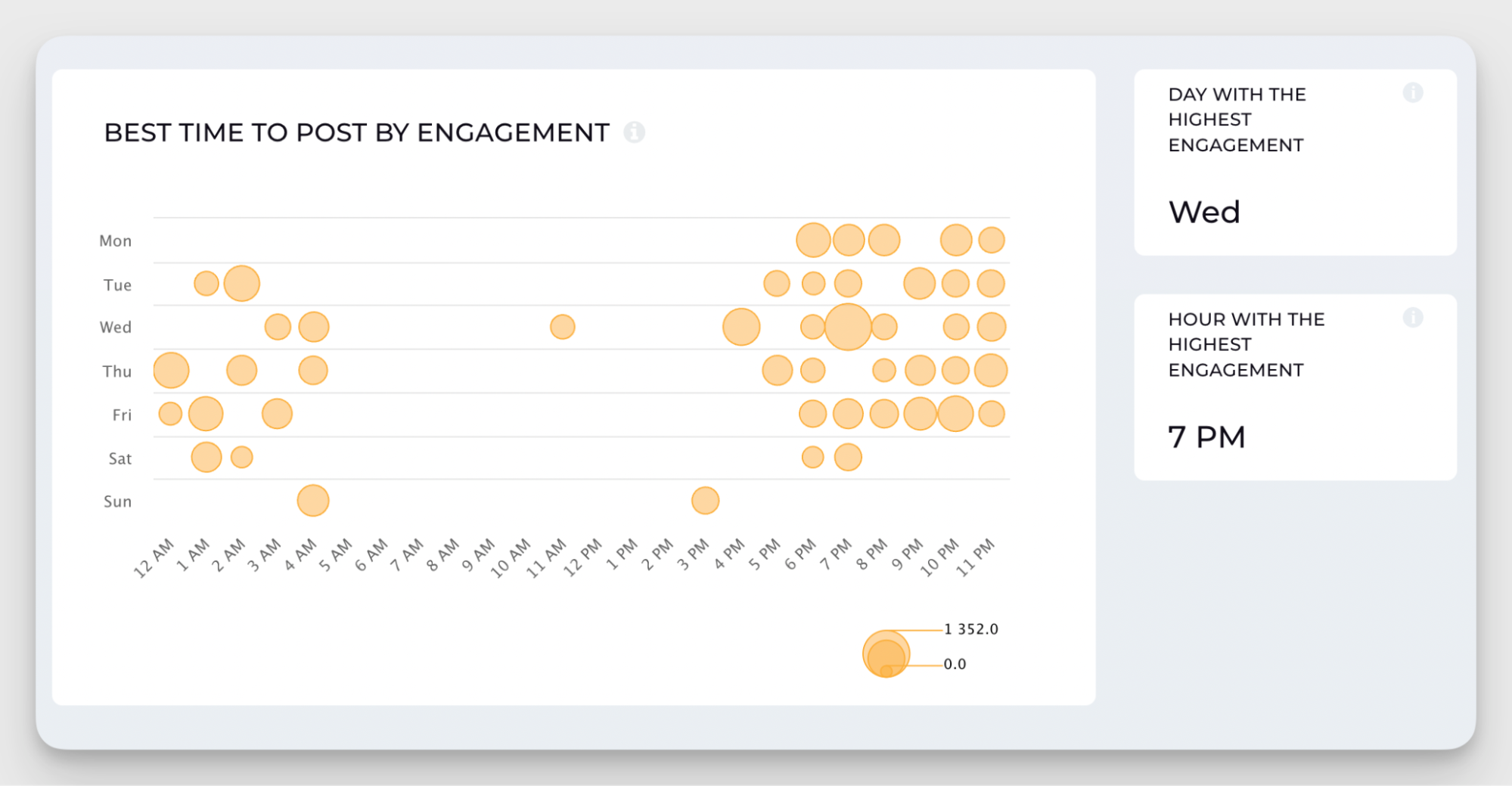
- Participate in Instagram challenges and trends
Jumping on relevant challenges or trending topics is an effective way to increase visibility and engagement with your audience.
Make sure to align the trend with your brand voice for authenticity.
Here's an example I have for you, with LaCroix jumping on the Labubu hype, showcasing their products alongside the cute Labubu character.
This created a fun and relatable conversation starter, driving interaction and keeping the brand at the center of a playful, trending topic.
- Leverage user-generated content campaigns
User-generated content (UGC) is powerful for creating trust and building community.
Encourage your audience to create content with your products, and feature it on your account to build social proof.
- Partner with micro influencers to target niche audiences
Micro-influencers (with 1K-100K followers) offer an affordable way to tap into niche audiences, delivering more targeted reach than larger influencers.
Their highly engaged followers value their recommendations over those from bigger, more generic accounts.
Another example I have for you is Frank Body’s collaboration with micro-influencers like Madeleine Edwards.
By partnering with influencers who have smaller but loyal followings, the brand authentically showcased products like the Firming Body Cream, building trust and driving conversions.
- Cross-promote with complementary accounts
Collaboration is essential on Instagram, trust me. Partnering with brands or accounts that align with your values—without being direct competitors—can help you cross-promote and broaden your reach.
A prime example is Bratz’s collaboration with Boy Smells to launch the Doll Skin Musk fragrance.
With their shared vibrant aesthetic, both brands successfully tapped into each other's audiences, expanding their visibility and engagement.
Final thoughts
In short, cracking the code to your Instagram audience means diving deep into the data that shapes their preferences.
Analyze, adapt, and tailor your content to meet their desires, and you’ll transform passive scrollers into loyal followers.
Research isn’t just a step; it’s the strategy that fuels your brand’s growth.
Analyze your competitors in seconds
Track & analyze your competitors and get top social media metrics and more!
You might also like
Improve your social media strategy with Socialinsider!
Use in-depth data to measure your social accounts’ performance, analyze competitors, and gain insights to improve your strategy.



